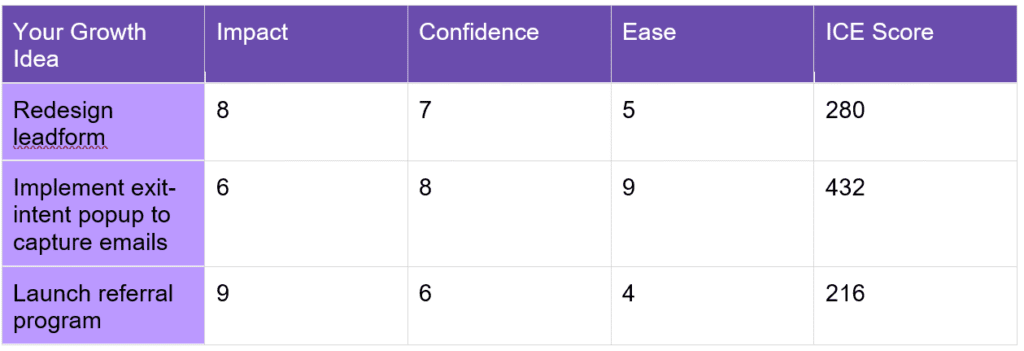
Data is overflowing, but actionable insights remain elusive; data-driven marketing is more important than ever. Drawing on years of experience in fast-paced startups and fintech, Victoria Bobeica distils seven key lessons that move beyond dashboards and dig into what truly drives impact. Whether you’re building your first performance engine or refining a mature stack, these takeaways will help you cut through the noise and turn metrics into momentum.
About Victoria Bobeica
Victoria Bobeica is a Senior Marketing Manager with over seven years of B2B and B2C marketing experience across startups and fintech. She specialises in performance marketing, product launches, and user acquisition. Currently at Raiffeisen Digital Bank, she leads multi-channel campaigns for digital banking products, connecting strategy to measurable business results across emerging markets.
In today’s marketing world, data is everywhere, but meaningful impact is still hard to come by. After years of working in fast-paced, startup environments and now in fintech, I’ve learned that collecting data is the easy part. The real challenge is turning that data into decisions that actually move the business forward.
If you are building a marketing system designed for clarity and results, here are seven lessons I would recommend based on what has worked (and what has not) in my experience.
1. Focus beats volume
Many teams track everything: clicks, scrolls, micro-conversions, and more. But more data does not always mean better decisions. According to the 2025 Supermetrics Marketing Data Report, marketers are using over twice as much data as they did in 2020, yet more than half say they do not have enough time to analyse it. Nearly four in ten say they lack the tools to integrate and report on it effectively.
The turning point comes when teams stop trying to track everything and instead focus on the few metrics that actually drive business outcomes. For example, narrowing in on cost per acquisition, funnel conversion rates, and sales distribution per channel can provide a much clearer picture of what is working.
What I recommend:
- Choose three to five KPIs that directly support your business goals.
- Use a prioritisation framework like ICE (Impact, Confidence, Ease) to decide what to focus on.
- Remove vanity metrics that do not influence decisions.


ICE framework implementation example
2. Connect your stack to business outcomes
If your tools are not connected, your insights will be incomplete. I have seen the biggest improvements when teams integrate their marketing stack from end to end. That means connecting ad platforms like Meta and Google Ads to attribution tools like Adjust, and then linking that data to your CRM, product analytics, and sales reporting systems. Here you can learn more about integrated martech stacks.
This allows you to track the full customer journey, not just app installs or clicks and shift your focus from surface-level metrics to real business impact like ROI and customer value.
What I recommend:
- Map your full data flow from acquisition to revenue.
- Make sure attribution tools are integrated across all key platforms.
- Align reporting with business KPIs, not just marketing metrics like CTR or CPC.
3. Make every report actionable
Reporting for the sake of reporting is a waste of time. If a report does not lead to a decision or action, it is just noise. One rule I have found helpful is to make sure every report includes one clear observation and one recommended action.
What I recommend:
- Apply the “so what” test – if a metric does not lead to a decision, remove it.
- Include a clear next step or hypothesis in every report.
- Make reporting a collaborative process across marketing, product, and analytics.
4. Test small, scale what works
You do not need a big budget to validate a big idea. Before scaling any new channel or campaign, I recommend running a short pilot, usually two to four weeks, with clear success metrics. This helps you test hypotheses, measure incrementality, and reduce risk.
The key is to define what success looks like before you launch, and to be disciplined about what gets scaled.
What I recommend:
- Set up structured pilot phases with clear KPIs like CPA, ROI, or retention.
- Use cohort analysis to evaluate performance over time.
- Only scale what proves to be both incremental and sustainable.
Helpful tools:
- Optimizely for A/B testing
- Adjust or Mixpanel for cohort tracking
5. Cut what does not drive growth
Not all activity is progress. In lean teams, efficiency is everything. I recommend conducting regular audits of your campaigns and channels to identify what is working and what is not. If a campaign does not support acquisition, retention, or revenue, it should be cut.
This discipline helps you focus on high-impact activities and avoid the trap of doing more just for the sake of it.
What I recommend:
- Run quarterly performance audits across all channels.
- Eliminate campaigns that do not contribute to core business goals.
- Reallocate budget and resources to what performs best.
Helpful tools:
- Supermetrics or Funnel.io for cross-channel performance audits
- Google Looker Studio for visualizing ROI by channel
6. Make data a shared language
Tools alone do not create alignment – people do. One of the most effective things I have seen is making data accessible across teams. Share dashboards with product, commercial, and customer support teams. Align everyone on shared OKRs and definitions of success.
When everyone understands the metrics and how they connect to business goals, collaboration becomes much easier.
What I recommend:
- Share dashboards with context, not just numbers.
- Align on shared OKRs and definitions of success.
- Use data to drive cross-functional conversations and decisions.
7. Interpretation is the real superpower
Data tells you what happened. Interpretation tells you why. Quantitative data is essential, but it only tells part of the story. To understand the full picture, I recommend pairing it with qualitative insights like user surveys, NPS feedback, and session recordings. This helps uncover friction points, messaging gaps, and UX issues that numbers alone cannot explain.
What I recommend:
- Combine behavioral data with user feedback and interviews.
- Use frameworks like Jobs to Be Done or the 5 Whys to dig deeper.
- Make interpretation a core skill across your team.
Helpful tools:
- Hotjar or Mouseflow for behavioral insights
- Typeform or SurveyMonkey for collecting customer feedback
Final thought
Data does not drive growth. Decisions do.
If you want to build a marketing system that delivers real impact, start with the basics: focus on what matters, connect your tools, and make every insight actionable. These seven lessons have helped me move from reporting to results and I hope they help you do the same.
Ultimately, it’s not the volume of data that powers growth – it’s the clarity of decisions. By focusing on what truly matters, connecting your marketing tech stack, and cultivating a culture of interpretation and action, marketers can finally unlock the full potential of their insights. These lessons have helped Victoria move from mere reporting to delivering results – and they can do the same for you.
Join Us Now!
Ready to elevate your marketing strategy? Be part of our 2025 summits – where innovation, networking, and cutting-edge insights meet in vibrant cities around the world. We can’t wait to welcome you in person!
➡ Explore the 2025 full calendar here! https://beetc.io/full-event-calendar-beetc/
Can’t attend in person? No problem. Join BEETc On-Screen, our On-Demand Learning Platform, for exclusive access to 500+ sessions and over 300 hours of content from global summits. Upskill at your own pace, gain actionable insights, and stay ahead in a rapidly evolving business landscape.
➡ Explore content from global summits! https://beetc.io/on-screen/
Stay up to date with our In Person Summit, Session Information, and Agenda Updates by following us on:
See more MarTech Thoughts Content/ Interview pieces here!
Last updated: July 2025













